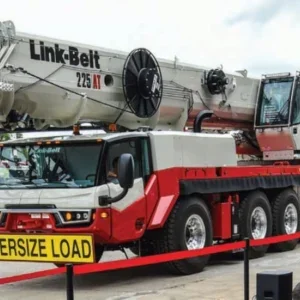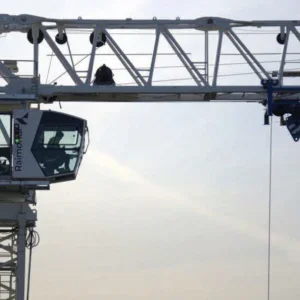The Darlington Bridge upgrade is an important part of the Adelaide North-South Corridor project, which spans 3.3 kilometres of the existing Main South Road.
The $620m project, funded by the Australian and State governments, also includes non-stop motorways, connecting surface roads, and interchange with dedicated motorway ramps. It is due for completion in 2019.
Sarens was tasked with finding a way to manoeuvre the 3.000t, 183m-long Darlington Bridge into its final position. The bridge, which was built over four months, will carry the Main South Road over the motorway.
Sarens used 132 axle lines of Kamag 2400 SPMTs, 8 jacking towers and a bracing system, along with about 100t of steel mats and beams, sourced from around the world.
The biggest challenge Sarens faced was successfully moving the bridge via SPMT to the final site: they had to transport the bridge for 800 metres along a road that went downhill and uphill over more than 3%.
Since they could not tilt or deform the bridge, a sophisticated measuring system had to be installed on the bridge to monitor any deformations. Using jacking towers on the end-trailers, as well as the stroke of the SPMT, Sarens operators could change the stroke in a way that would limit deformations and stresses to the bridge.
Everything from maximum SPMT travel speed to emergency braking, deceleration, and acceleration had to be carefully planned. The engineering team also had to take into account possible vertical acceleration of the bridge during transport, due to the interaction of the movement with the SPMT bogie suspension and the path roughness.
The SPMTs were grouped and hydraulically linked in different configurations for the transport operation and the lift and lowering operation. For the transport operation, SPMT bogies at each support position were linked into two separate groups for stroke adjustment. This controlled the SPMT platform levels during movement. For the lift and lowering, all SPMT bogies at each support position were linked and connected to a master computer, which enabled them to lift or lower simultaneously in small increments.
“The whole operation was planned for 60 hours, but we did it in about 22 hours, which was very well appreciated by our client,” says project manager Peter Keyen.
With the Darlington Bridge successfully in place, a second bridge is being built using the same methods.
It will be installed next year, and will bring traffic across the Southern Expressway to the 3.3km lowered motorway. Eight bridges, in total, will be built as part of the Darlington Upgrade Project. According to transport minister Stephen Mullighan, moving them into place would be a first for an Australian civil construction project.






